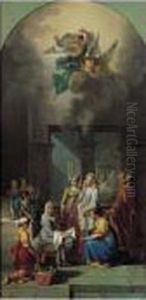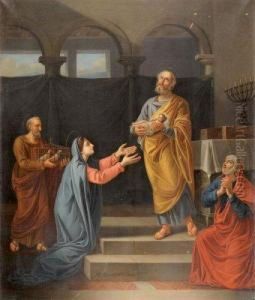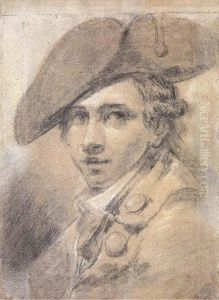Guillaume Joseph Roques Paintings
Guillaume Joseph Roques was a French painter born on November 10, 1757, in Toulouse, France. He was a key figure in the neoclassical movement that emerged in the late 18th century, which sought to return to the classical ideals of beauty, harmony, and proportion as seen in ancient Greek and Roman art. Roques studied under Jean-Baptiste Despax and later at the Royal Academy of Painting and Sculpture in Paris, where he was influenced by the works of the renowned neoclassical artist Jacques-Louis David.
During his career, Roques became known for his historical and mythological scenes, as well as his portraits. He exhibited at the Paris Salon, an official art exhibition of the Académie des Beaux-Arts in Paris, and received critical acclaim for his works. Roques was also a respected art teacher, passing on the neoclassical ideals to a new generation of artists. He served as a professor at the Toulouse Academy where he had once been a student.
In addition to his contributions to neoclassicism, Roques' work also shows the influence of the Rococo style, which was characterized by more playful and elaborate themes. His ability to blend the grandeur and simplicity of neoclassicism with the ornateness of Rococo set his work apart from that of his contemporaries. Despite his success, Roques remained largely attached to his hometown of Toulouse, where he continued to work and teach throughout his life.
Guillaume Joseph Roques died on August 24, 1847, in Toulouse, leaving behind a legacy as one of the important provincial painters of his time. His works continue to be studied for their contribution to the development of French neoclassical art and for their representation of the artistic transition from the Rococo to the more austere and politically charged neoclassical style, which became dominant in the turbulent years surrounding the French Revolution and the rise of Napoleon.


